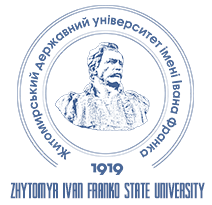USE OF ELECTRONIC RESOURCES AND WEB SERVICES IN TEACHING FOREIGN LANGUAGES
DOI:
https://doi.org/10.35433/pedagogy.2(113).2023.273-284Keywords:
information and communication technologies, Internet resources, web technologies, electronic educational resources, applications, foreign language teachingAbstract
The article raises the question of the need to use network electronic resources and web services in teaching professionally oriented foreign language communication in non-linguistic institutions of higher education. The need to use a communicative approach is noted, as the introduction of new technologies involves active communication with foreign colleagues. That is why foreign language teaching in a non- linguistic educational institution is considered as an integral part of professional training for a specialist. It is noted that information and communication technologies provide information content for communication. Various Internet applications, network resources, platforms that help in foreign language learning are described in detail. The benefits of each network resource and program are revealed. It is emphasized that the application of modern computer technologies in the learning process is considered as one of the main tasks of increasing the educational efficiency at the university. It has been proven that information and communication technologies can be applied in different types of educational activities: independent information search, self-education, in classes, in extracurricular/extramural time, in distance courses. The need to create a catalog of educational resources of the Internet is considered, which introduces teachers to the possibilities of using information technologies in professional activities. The author emphasizes that the use of Internet applications, electronic and technical means stimulates language activity, communicative readiness and creativity, which is especially important when teaching professionally oriented foreign language communication. It is emphasized that Internet resources can include reference literature, educational, scientific, methodological, historical, cultural and technical information as well.a
References
Antoshchuk, S.V. (2020). Internet-resursy ta vebservisy yak navchalni instrumenty pedahoha [Internet resources and web services as teaching tools for teachers]. In: Orhanizatsiino-praktychni zasady rozvytku tsyfrovoho osvitnoho prostoru zakladu osvity – Organizational and practical basis for the development of the digital educational space of the educational institution: zb. mater. Vseukr. nauk.-prakt. internet-konf., 5-6 travnia 2020 r., DZVO "Universytet menedzhmentu osvity", m. Kyiv, Ukraina, 26-30 [in Ukrainian].
Provorova, Y.M., Harasym, T.O., Zubryk, A.R., Ladyka, O.V., & Shepitchak, V.A. (2020). Formation of foreign language professionally oriented competence of future foreign language teachers with the use of electronic educational resources. Journal for Educators, Teachers and Trainers, vol. 11(1), 1-12 [in English].
Rohulska, O.O., & Tarasova, O.V. (2019). Dotsilnist vykorystannia mobilnykh dodatkiv u profesiinii pidhotovtsi maibutnikh uchyteliv inozemnykh mov [Feasibility of using mobile applications in the professional training of future foreign language teachers]. Visnyk Natsionalnoi akademii Derzhavnoi prykordonnoi sluzhby Ukrainy – Bulletin of the National Academy of the State Border Guard Service of Ukraine. Seriia: Pedahohika, vyp. 1. Retrieved from: http://nbuv.gov.ua/UJRN/Vnadped_2019_1_9 [in Ukrainian].
Voronova, N. (2019).Tsyfrovi osvitni resursy v teorii i praktytsi suchasnoi zarubizhnoi osvity [Digital educational resources in the theory and practice of modern foreign education]. Profesionalizm pedahoha: teoretychni y metodychni aspekty – Teacher's professionalism: theoretical and methodological aspects, vyp. 9, 37-47. Retrieved from: http://nbuv.gov.ua/UJRN/prptma_2019_9_6 [in Ukrainian].
Cadre européen commun de référence pour les langues: apprendre, enseigner, évaluer. Volume complémentaire avec de nouveaux descripteurs. (2018). Paris. Retrieved from: https://savoir.cavilam.com/assets/courseware/v1/5514e28d3ec28f59e95b0d8d6d00e740/asset-v1:SELF+CR+1+type@ asset+block/CECR-VC2018.pdf [in French].
Lebrun, M. (2007) Theories et methodes pedagogiques pour enseigner et apprendre. Editions de Boeck Universite. Bruxelles [in French].
Lynch, M. (2018). What is the Next Generation of Digital Learning Environments? Retrieved from: https://www.thetechedvocate.org/what-is-the-next-generation-of-digital-learning-environments/ [in English].
O’Reilly, T. (2005). What is Web 2.0? Retrieved from: http://oreilly.com/web2/archive/what-is-web-2.0.html [in English].
Urazova, M.R. (2020). Innovative technologies in teaching and studying English. Austrian Journal of Humanities and Social Sciences, No. 5-6, 28-37. DOI: http:/doi.org/10.29013/AJH-20-5.6-28-37 [in English].
Wit, M., & Dompseler, H. (2017). How to create a digital learning environment consisting of various components and acting as a whole? Retrieved from http://www.eunis.org/download/2017/EUNIS_2017_paper_16.pdf [in English].
Downloads
Published
Issue
Section
License

This work is licensed under a Creative Commons Attribution-NonCommercial-NoDerivatives 4.0 International License.
Authors published in this journal agree to the following terms:
a) The authors reserve the right to author their work and grant the journal the right to first publish this work under the Creative Commons Attribution License, which allows others to freely distribute the published work with a mandatory link to the authors of the original work and the first publication of the work therein magazine.
b) Authors have the right to enter into separate additional agreements regarding the non-exclusive distribution of the work in the form in which it was published by this journal (for example, posting work in an electronic repository of the institution or publishing as part of a monograph), provided that the reference to the first publication of the work is maintained therein. magazine.
c) Journal policy permits and encourages the submission of manuscripts by the authors on the Internet (for example, in repositories of institutions or on personal websites), both prior to submitting this manuscript to the editorial board and as it contributes to the emergence of productive scientific discussion, and has a positive impact on the promptness and dynamics of citing a published work (see The Effect of Open Access).

 ISSN
ISSN 





